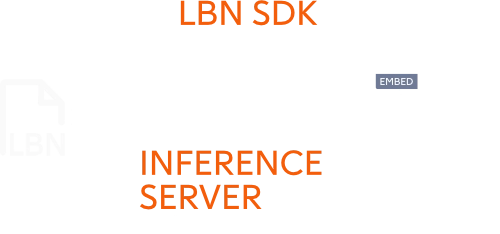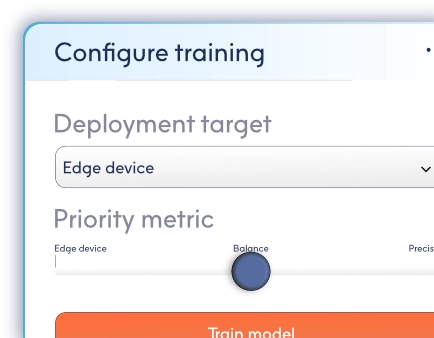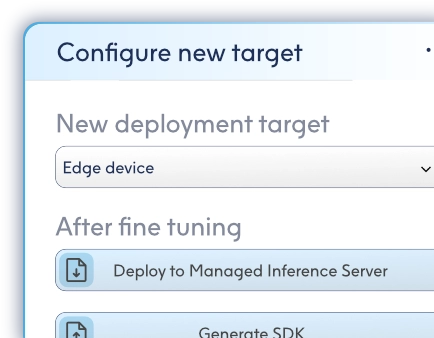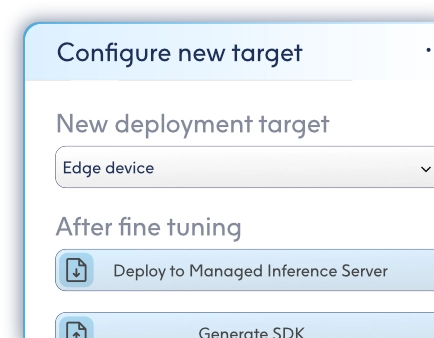Frequently asked questions
How do LBNs perform? 
LBNs are an AI algorithm and an alternative to classic algorithms, such as neural networks. Because they’re logic-based, they’re fast, really fast. Even when run on an MCU, they perform over 50x faster than neural networks and consume over 50x less power. You can download our use-cases and benchmark results for more performance information.
What does the software pipeline do? 
Literal Labs offers training software (aka a pipeline) for logic-based networks (LBNs); they’re an alternative to neural networks. The pipeline lets you train, benchmark, and deploy AI models that are faster, smaller, more efficient, and more explainable than those offered by classical machine learning approaches.
Do I need GPUs or specialised hardware to use it? 
No. The pipeline runs on Literal Labs’ secure servers, while the models it trains can be deployed on MCUs, CPUs and other hardware and servers.
What types of data do LBNs support? 
The current version supports CSV datasets, including time-series, sensor, and tabular data. Future releases will expand to additional data formats and their use cases. Subscribe to our newsletter to be alerted when additional data formats are supported and released.
How accurate are LBNs compared to neural networks? 
Despite averaging under 8kB in size, LBNs typically perform within ±2% of the accuracy of much larger neural networks. LBNs balance accuracy with unmatched speed and efficiency.
Do I need an engineering team to build LBNs? 
Definitely not. The training pipeline is designed to simplify the production of LBNs, and we’re constantly refining it so that companies can use its capabilities irrespective of whether they have an AI engineering team or a data science team. The pipeline offers browser-based GUI, making it easy for non-AI-experts and experts alike to train LBN models, while the API gives engineers deeper integration and control.
Where can I deploy LBNs? 
Just about anywhere (within reason). LBNs are small and efficient enough to perform AI inference on microcontrollers and edge devices where LBNs are silicon-agnostic and deployable via C++. In fact, LBNs have even been tested on battery-powered IoT devices. But LBNs aren’t just for edge AI — they also scale to bring logic-based AI to CPUs and servers.
Are LBNs suitable for enterprise applications? 
Absolutely. In fact, all our use cases document solutions for £100 million+ companies. LBNs are compact but powerful, making them ideal for high-volume or resource-constrained environments. Current deployment use cases include IoT, predictive maintenance, decision intelligence dashboards, and anomaly detection.
How does LBN model retraining work? 
When your data changes, retraining is simple. Upload a new dataset via the GUI or script the process via API. You can then trigger the pipeline to re-train, re-benchmark, and fine-tune your existing models for redeployment.
Can the software train generative AI models? 
Not yet. We are currently focussed on deterministic LBNs as opposed to generative tasks. However, we are constantly expanding both the capabiltiies of LBNs and the pipeline used to train them. To stay informed as capabilities expand, subscribe to our newsletter.








